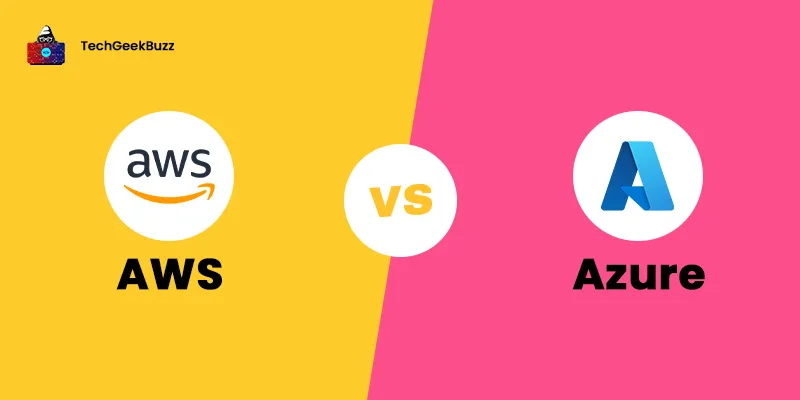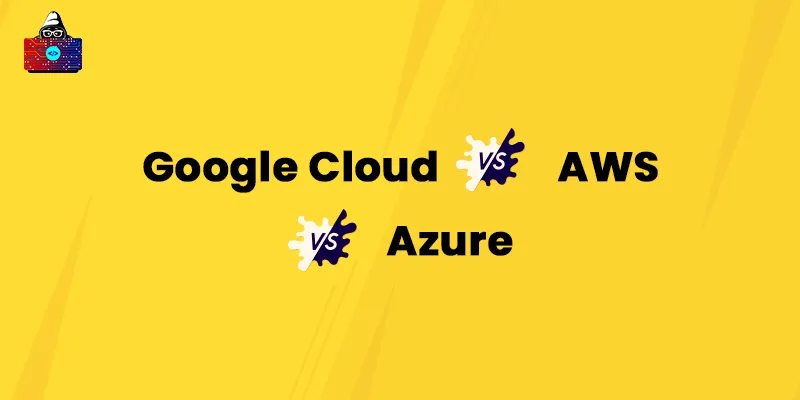At present, there are various technologies that have transformed different aspects of our life. This includes the way we work, run businesses, interact with each other, and so on. One such flourishing and in-demand technology is cloud computing, which is revolutionizing the way businesses and organizations are running their operations.
In this article, we will introduce you briefly to cloud computing and talk about one of the best cloud services providers, AWS. Also, you will learn about various Amazon Web Services, their applications, and the key advantages and disadvantages of using Amazon Web Services. So, let us begin with a quick overview of cloud computing.
What is Cloud Computing?
Not so long ago, businesses and companies had to use traditional computing, i.e., they had to establish their IT infrastructure to store their digital assets and host applications. Cloud computing has, however, eliminating the need for establishing and maintaining physical data centers and servers. Cloud services allow businesses to store their data on a remote server and then access it via the internet.
Apart from storing and making data easily accessible, cloud computing can do much more. We can define cloud computing as on-demand access to computing services, such as storage, development tools, physical and virtual servers, networking capabilities, applications, and so forth, via the internet hosted at a remote data center. A cloud services provider (CSP) offers these computing resources on an as-needed basis.
What is AWS?
Amazon Web Services is a widely used cloud platform developed by Amazon that offers more than 200 services from data centers spread across the globe. From the fastest-growing start-ups to government agencies and large organizations, numerous organizations and individuals use AWS to make their businesses more productive.
This cloud platform is a combination of Infrastructure as a service (IaaS), Platform as a Service (PaaS), and packaged Software as a Service (SaaS) offerings. It serves millions of customers in more than 190 countries and is used by many reputed companies, like Netflix, Twitter, ESPN, Adobe, Instagram, Pinterest, Dropbox, and LinkedIn.
History of AWS
Back in the year 2002, Amazon Web Services stepped into the market with the aim of selling its unused infrastructure via IaaS. Amazon launched Simple Queue Service (SQS), the first service available in AWS, in 2004. In the year 2006, Amazon relaunched Amazon Web Services with the release of two new services - S3 and EC2, along with SQS.
Later, it released multiple offerings, like VPC in 2009, Route 53 and SNS in 2010, and Elastic Beanstalk in 2011. Later in 2012, Amazon organized several big events with the intent to collect customer feedback, discuss new trends and technologies, and announce its new products. Some major events hosted by Amazon are:
- re: Invent
- Summits
- re: Inforce
- Innovate
- re: Mars
In April 2013, Amazon started its certification program intended for software engineers having skills in cloud computing. Amazon then launched Amazon Partner Network (APN) in 2014.
By 2016, it surpassed the revenue target of $10 billion and launched Snowball and Snowmobile in the same year. Later in 2018, Amazon introduced new certifications that featured machine learning and artificial intelligence. In the following year, Amazon Web Services offered around 100 fully-featured services, and by 2021, it provided more than 200 products and services.
Popular AWS Services
Amazon Web Services offers a wide collection of cloud-based services. Some of the most popular ones are discussed as follows:
1. AWS Compute Services
Below are the five significant compute services from Amazon Web Services:
1) Elastic Compute Cloud (EC2)
It is a web service that offers resizable and scalable computing for running applications in the AWS cloud. With Amazon EC2, developers can launch as many virtual servers as required. Also, they can even manage storage and configure security and networking using EC2.
2) LightSail
LightSail is a cloud service that allows web developers to access a suite of tools and a configurable virtual private server (VPS). Amazon LightSail is used to deploy and manage web applications and websites in the cloud.
3) Elastic Beanstalk
This service is responsible for deploying and scaling web services and applications developed in Node.js, Python, Go, Java, PHP, .NET, Docker, and Ruby on well-known servers, such as IIS, Passenger , Apache, and Nginx. You are just required to upload your code, and Elastic Beanstalk automatically deploys web applications and services.
4) Elastic Container Service for Kubernetes (EKS)
As its name implies, this Amazon service enables you to use Kubernetes on the Amazon Web Services platform without installing it.
5) AWS Lambda
It is a serverless computing platform that facilitates the development of functions and self-contained applications in Java, Node.js, and C# through .NET, Python, Ruby, and Go languages. You can then upload these functions or applications on Lambda, and it will execute them efficiently in the Amazon cloud.
2. Migration
Below are the migration services from Amazon Webs Services that allow users to transfer data between the data center and AWS physically:
- Database Migration Service (DMS): It allows you to migrate on-site databases to the Amazon platform. Also, it supports migrating one type of database into another. For example, Oracle to MySQL.
- Server Migration Service (SMS): It enables you to migrate on-site servers to the Amazon Web Services platform.
- Snowball: With Snowball, you can move terabytes of data to and from the AWS environment.
3. AWS Storage
Three storage services offered by Amazon Web Services are as follows:
- Amazon Glacier: This Amazon web service offers durable, fast, and secure storage for data backup and archiving.
- Amazon Elastic Block Store (EBS): It is a high-performance block-level storage solution used with EC2 instances.
- AWS Storage Gateway: It allows users to integrate on-premises software applications with cloud-based storage securely.
4. Security Services
Below are the popular Amazon security services:
- Identity and Access Management (IAM): It is a cloud security service allowing you to manage your access to Amazon resources and services. Also, it helps you to create AWS groups, manage users, and assign permissions to allow or deny access to Amazon Web Services resources.
- Inspector: It is an automated security assessment service that enhances the security of applications deployed on the cloud. With AWS Inspector, you can detect security vulnerabilities within your applications and EC2 instances.
- Certificate Manager: You can get free SSL certificates for your domain through AWS Certificate Manager.
- Web Application Firewall (WAF): This Amazon Web Service security service prevents SQL injection attacks and cross-site scripting attacks by offering application-level protection.
- Cloud Directory: This Amazon service enables you to create cloud-native directories for managing hierarchies of data. It lets you create directories for course catalogs, organizational charts, and device registries.
- Key Management Service (KMS): This cloud security service from Amazon enables users to create and manage encryption keys for encrypting the data.
- Organizations: AWS Organizations helps users to manage and control their environments as they scale Amazon Web Services resources. It enables them to create new AWS accounts, group accounts, and apply policies to groups or accounts for governance.
- Shield: It is a service that offers protection against distributed denial of service (DDoS). Also, it safeguards all applications running on the cloud.
- Macie: This service uses machine learning and pattern matching to safeguard your sensitive data stored in Amazon Web Services.
- GuardDuty: It is an Amazon threat detection service that constantly keeps track of your Amazon Web Services accounts and workloads for any malicious activity.
5. Database Services
Amazon Web Services offers various databases services that are listed below:
- Amazon RDS: This Amazon database service allows users to build, operate, and scale relational databases in the Amazon cloud.
- Amazon DynamoDB: It is a fully managed, cost-effective, and reliable NoSQL database service that allows faster storage and retrieval of data.
- Amazon ElastiCache: It is a caching service that supports real-time use cases and speeds up application and database performance.
- Neptune: This service lets users create and handle graph databases in the public cloud.
- Amazon Redshift: It analyzes structured and semi-structured data across data lakes, operational databases, and data warehouses using SQL.
6. Analytics
Various analytics services offered by Amazon Web Services are mentioned as follows:
- Athena: It is an interactive query service that uses standard SQL to analyze data in Amazon S3. Interestingly, you have to only pay for queries that you run.
- CloudSearch: This Amazon managed service helps you develop, manage, and scale a fully functional search engine for your website.
- Kinesis: This service helps you to collect, process, and analyze real-time streaming data, allowing you to respond to new information and get timely insights quickly.
- QuickSight: With QuickSight, users can create and publish Business Intelligence dashboards effortlessly.
- Elastic Map Reduce: It is a robust platform that helps you to use open-source frameworks for processing, analyzing, and applying machine learning to big data.
- Data Pipeline: It is an Amazon web service that supports the processing and movement of data between various Amazon storage and computes devices.
7. Management Services
Various management services offered by Amazon Web Services are as follows:
- CloudFormation: This Amazon service treats the infrastructure as code and allows you to model, provision, and manage AWS and third-party resources.
- OpsWorks: It is a configuration management service that provides managed instances of two automation platforms, Chef and Puppet. These platforms let you automate your server’s configuration by using code.
- Service Catalog: Organizations can create and manage catalogs of AWS-approved IT services using Service Catalog. Also, it assists you in managing deployed IT services and your metadata, resources, and applications.
- Config: This Amazon service helps you to assess and evaluate the configurations of Amazon Web Service resources. You can even review changes in configurations and relationships between Amazon resources.
- AWS Auto Scaling: Autoscaling keeps track of your applications and automatically tunes capacity to maintain steady performance at lower costs.
- System Manager: It is an operations hub for Amazon Web Services. System Manager offers a robust user interface, helping you to monitor and resolve operational issues across Amazon resources and applications.
- Managed Services: This Amazon web service helps you effectively manage your AWS infrastructure.
8. Internet of Things
Below is various Internet of Things services provided by AWS:
- IoT Core: It is a managed cloud service offering software that allows you to connect IoT devices to Amazon Web Services and other devices.
- IoT Device Management: This Amazon service helps you to register, organize, monitor, and manage your IoT devices remotely at any scale.
- IoT Analytics: This service is useful for performing analysis on the data collected by your IoT devices.
- Amazon FreeRTOS: RTOS stands for Real-time Operating System. FreeRTOS is an open-source real-time operating system for microcontrollers that helps you to connect IoT devices in the cloud or the local server.
9. Application Services
Following are the application services that Amazon Web Services offers:
- Step Functions: It is a visual workflow service that helps you to develop serverless applications, orchestrate Amazon Web Services, and automate business processes. Step Functions enables developers to concentrate on high-level business logic as it manages low-level activities, like failures, parallelization, retries, observability, and service integration.
- Simple Workflow (SWF): The SWF service helps you develop an application that coordinates activities across several distributed components of your application.
- Simple Notification Service (SNS): It is a messaging service for the communication of application-to-application (A2A) and application-to-person (A2P).
- Simple Queue Service (SQS): It is a message queuing service that allows users to scale and decouple serverless applications, distributed systems, and microservices.
- Elastic Transcoder: It converts media files stored in Amazon S3 into the format required by the consumer playback devices, like smartphones, laptops, tablets, and so on.
10. Deployment and Management
Deployment and management services of Amazon Web Services are listed below:
- AWS CloudTrail: It keeps track of account activity and records across the AWS infrastructure. Also, CloudTrail allows you to take control over storage, analysis, and redemption actions.
- Amazon CloudWatch: It is a monitoring and observability service specially developed for IT managers, site reliability engineers (SREs), and DevOps engineers and developers. Moreover, CloudWatch helps you manage your applications, optimize resource utilization, and respond to system-wide performance changes by providing data and actionable insights.
- AWS CloudHSM: CloudHSM stands for cloud-based hardware security module. It allows you to generate your own encryption keys and use them on the Amazon platform.
11. Developer Tools
Here is a list of developer tools provided by Amazon:
- CodeStar: This tool assists you in developing and deploying applications across Amazon Web Services. It provides a comprehensive user interface, letting you manage all software development activities in a single place.
- CodeCommit: It is a source control service hosting private Git repositories and allows you to store anything, from code to binaries, in the AWS cloud privately.
- CodeBuild: It is a continuous integration service that helps you to automate the process of code compilation, test execution, and software packages development.
- CodeDeploy: It is a deployment service that helps you to deploy your code in Amazon EC2 instances, AWS Lambda, AWS Fargate, and on-premises servers.
- CodePipeline: It is a continuous delivery service that enables users to automate their release pipelines. Whenever there is a change in code, this service builds, tests, and deploys the code.
- Cloud9: It is a cloud-based IDE allowing developers to develop, run, and debug their code using a browser. Cloud9 includes a code editor, debugger, and terminal.
12. Mobile Services
Amazon provides the below mentioned mobile services:
- Mobile Hub: It is a set of AWS tools that simplifies the process of configuring, developing, and testing mobile applications.
- Cognito: This service allows you to quickly add user sign-in, sign-up, and access control to your mobile applications.
- Device Farm: It is an application testing service that tests mobile and web applications across a broad spectrum of desktop browsers to improve their quality.
- AWS AppSync: This service makes it easier for developers to develop GraphQL APIs.
13. Artificial Intelligence
Here are the artificial intelligence services provided by Amazon:
- Lex: It is an artificial intelligence service that allows you to integrate conversational interfaces into applications.
- Polly: It is a text-to-speech service that converts any text into realistic speech. Moreover, AWS Polly lets you build speech-enabled products and applications.
- Rekognition: It is an image analysis or face recognition service in the Amazon AI suite. Using Rekognition, you can recognize objects and faces in videos and images.
- SageMaker: Data scientists and developers use Amazon SageMaker to prepare, develop, train, and deploy top-notch machine learning models using purpose-built tools.
- Transcribe: It is a speech-to-text AI service that developers can use in their applications to add speech-to-text capabilities.
- Translate: It is a neural machine translation service in the Amazon AI suite that uses deep learning models to provide high-quality language translation.
14. Business Productivity
Amazon Web Services offers certain business productivity services that are discussed as follows:
- Alexa for Business: This AWS service helps organizations and businesses use Alexa as an intelligent assistant to be more productive at their work.
- Chime: It is a communication service allowing businesses to use it for video conferencing and meetings.
- WorkDocs: It is comprehensive content creation, storage, and collaboration service that lets users create, edit, and access content stored in the cloud from anywhere.
- WorkMail: It is a business email and calendar Amazon web service that users leverage to access their calendars, emails, and contacts using a web browser or a client application, like Microsoft Outlook, Android and iOS email applications, or any other app that supports the IMAP protocol.
15. Desktop & App Streaming
Below are the two desktop and app streaming services offered by Amazon:
- Workspaces: It is a desktop virtualization service or a Virtual Desktop Infrastructure (VDI) that lets users access cloud resources from any supported device.
- AppStream: This cloud service offers a way to stream desktop applications in the web browser.
16. Customer Engagement
Following are the three primary customer engagement services from Amazon:
- Amazon Connect: It is an omnichannel cloud contact center that enables you to create a customer care center in AWS.
- Pinpoint: It is an outbound and inbound marketing communications service that allows you to communicate with your customers via email, voice, SMS, and push notifications.
- Simple Email Service (SES): It is a cost-effective email service that lets you send bulk emails to your customers.
17. Augmented Reality and Virtual Reality (AR & VR)
Amazon Sumerian is an AWS AR & VR service that enables you to create and run augmented reality, virtual reality, and 3D applications. Moreover, it does not require you to possess 3D graphics expertise or specialized programming to create such applications.
18. Game Development
GameLift is a dedicated game server hosting service offered by Amazon. It enables you to deploy, operate, and scale cloud servers for multiplayer games.
Applications of AWS
Here are some typical applications of AWS services:
- Website hosting.
- Media distribution and content delivery.
- Academic computing.
- Social networking.
- Storage, backup, and disaster recovery.
- Search engine development.
- Media sharing.
- Mobile and web application development.
Advantages of AWS
AWS offers an array of perks to businesses, government agencies, and individuals that are as follows:
1. Cost-effective
Amazon Web Services follows the pay-as-you-go pricing model. Therefore, it is cost-effective, as you need to pay only for those services that you use without any upfront commitments. Therefore, for services that you don’t use, you have to pay nothing.
2. Improved Security
AWS is a highly secure cloud platform, as it follows end-to-end encryption to secure its infrastructure.
3. Reliable and Robust
The Amazon Web Services infrastructure is secure, reliable, and scalable. Therefore, all AWS products and services offer high reliability.
4. Easy to Use
AWS is an easy-to-use cloud platform that allows application providers and independent software vendors to host their applications quickly.
5. Scalable
Amazon Web Services offers the flexibility to scale your applications up and down depending on the demand using certain tools, namely Elastic Load Balancing and Auto Scaling. You can access AWS storage and compute resources wherever required.
6. Flexible
The AWS platform allows you to pick the desired web application platform, operating system, database, programming language, and other required services. In addition, it offers a virtual environment that lets you load services and software that your application needs to run smoothly.
Disadvantages of AWS
Though Amazon Web Services offers a myriad of perks, it has some drawbacks too that are listed below:
- An internet connection is mandatory to access the data stored on the AWS platform.
- It requires you to pay for more intensive or immediate technical support.
- When you move to the Amazon cloud, AWS may have some rare and weird glitches and issues, such as downtime, backup protection, or limited control.
- There are restrictions on resources, like snapshots, images, and volumes, depending on the region.
Conclusion
AWS is a unified cloud platform used globally and has something to offer everyone. It provides a plethora of computing services that can meet the needs of a wide variety of IT professionals, ranging from DevOps engineers to software developers. The best part of this cloud service provider is that it charges on a pay-as-you-go basis.
With most organizations and businesses using Amazon Web Services, they are looking for AWS-certified professionals. You can kickstart your career in the cloud domain with AWS certifications intended for beginners, intermediate learners, and experts. Being an AWS-certified professional can open up a lot of job opportunities.
People are also reading:




